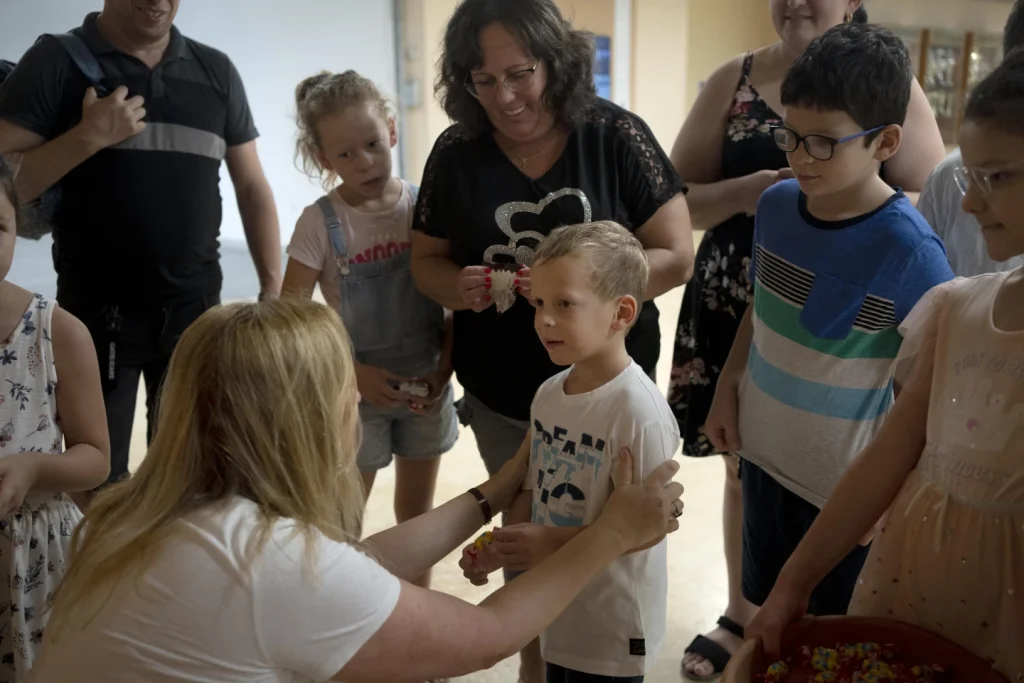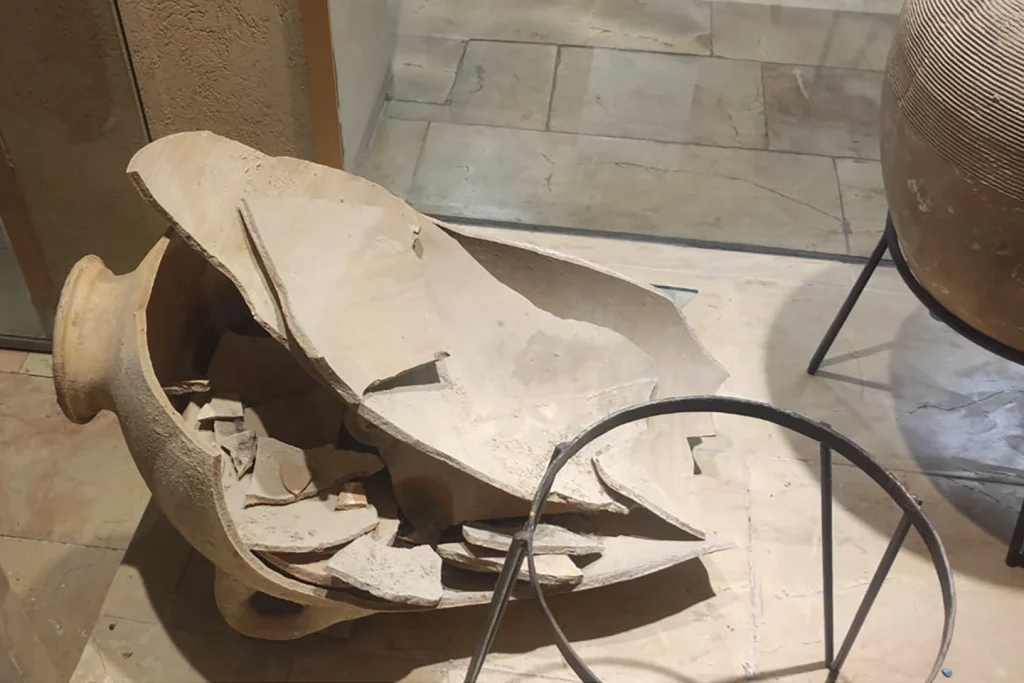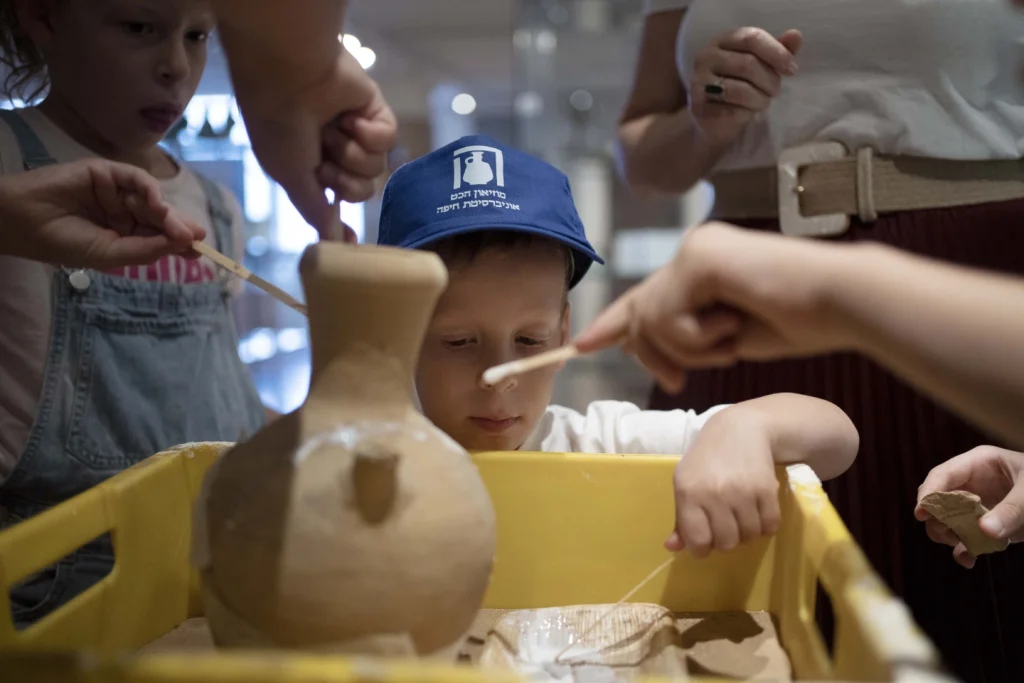In a memorable incident at the Hecht Museum in Haifa, Israel, an event unfolded that eloquently encapsulates the intertwined themes of curiosity, responsibility, and community in the educational landscape.
The unfortunate accident involving a 3,500-year-old Bronze Age jar—an artifact of historical significance—serves not merely as an anecdotal tale of mishap but as a profound opportunity for reflection and learning.
This incident, which involved four-year-old Ariel Geller, his family, and the museum staff, frames a narrative that transcends beyond mere destruction, transforming into a remarkable lesson on the significance of human engagement with history and the inherent responsibility that comes with it.
The Geller family, hailing from Nahariya, has been ensconced in the unsettling tensions of geopolitical strife, having lived in an area frequently targeted by rockets from Hezbollah.
In the midst of such instability, the family sought solace in the exploration of cultural heritage through visits to museums, a pursuit that not only enriches the mind but also offers an essential respite from external anxieties.
Anna Geller momentarily lost her focus as her son engaged with the ancient artifacts on display, leading to the catastrophic incident.
The resultant shattering of the jar, a significant relic dating between 2200 and 1500 B.C., encapsulates a poignant moment for parents, particularly in the realm of child-rearing—a scenario that many parents could imagine as an abject failure on their part.
As Anna Geller explained, her son’s desire to simply understand the contents of the jar reflects a characteristic inherent to childhood—an insatiable curiosity.
It is legitimate to question whether such impulses should be stifled or nurtured. Indeed, children often engage with their surroundings through an experimental lens, and this moment serves as an exemplar of how curiosity can sometimes lead to unintended consequences.
In the context of educational philosophy, this incident sparks a meaningful dialogue on the balance between allowing children to freely explore the world and the need for boundaries that protect valuable cultural artifacts and educational experiences.
The response of the museum staff stands as a powerful testament to the potential for learning that can emerge from even the most unfortunate of incidents.
Inbar Rivlin, the museum director, recognized the rich educational opportunity that the restoration process of the jar represented.
The decision to employ modern technology, such as 3D imaging and high-resolution videos, for its restoration was a commendable step that harnessed the incident into an instructive experience for both the Geller family and the wider community.
Such an approach reinforces the notion that education extends beyond books and classrooms; it has the capacity to encompass real-world experiences that involve both successes and failures.
Moreover, the Geller family demonstrated resilience and adaptability, qualities reflective of human nature in the face of adversity.
Following the incident, Ariel returned to the museum with a clay vase of his own, symbolizing a gesture of goodwill and responsibility. This act not only served as an apology but illuminated the intrinsic lesson of ownership of one’s actions, a vital cornerstone of moral education.
The incident subsequently became a shared narrative, one that the family could bond over, complete with their recognition of the learning curve involved in navigating the complexities of history and their place within it.
The educational value of museums as centers for engagement with the past becomes increasingly relevant in an era where virtual experiences dominate.
The policy of the Hecht Museum to allow unencumbered interaction with its artifacts highlights a progressive vision in museum curation, enabling audiences to connect with history on a tactile level.
In a world inundated with high-tech platforms that partition users from physical engagement, the Hecht Museum presents a refreshing counter-narrative, fostering direct human connections with history while simultaneously inviting the possibility of errors—providing ample space for dialogue surrounding the nature of respect and care in the preservation of cultural heritage.
This incident involving Ariel Geller’s momentary lapse poignantly underscores the importance of recognizing the interplay between curiosity and caution.
It challenges society to embrace a more forgiving and constructive approach toward mistakes—especially those committed by children who are navigating the boundaries of exploration.
Rather than assigning blame, the community—including the museum staff, the Geller family, and the external observers—collaboratively acknowledged the significance of the moment as a pedagogical opportunity, enhancing their collective understanding of history.
Roee Shafir, a distinguished restoration expert affiliated with the museum, confidently articulated that the forthcoming repairs on the artifact in question would be relatively straightforward, primarily due to the fact that the pieces in his possession originated from a single,

intact jar, thus facilitating a more manageable restoration process in contrast to the often overwhelming task faced by archaeologists who must contend with an amalgamation of fragmented shards spanning multiple objects, compelling them to engage in the intricate and sometimes frustrating endeavor of piecing together disparate remnants of cultural heritage.
As Shafir meticulously undertook the reassembly of the jar, his commitment to preserving the integrity of the artifact was evident; nonetheless, he posited an intriguing perspective regarding public interaction with such historical relics, asserting that artifacts ought to remain accessible to the general populace, despite the inherent risks associated with potential accidental damage.
He emphasized the conceptual importance of tactile engagement, suggesting that the act of touching an artifact can serve as a profound catalyst for fostering a deeper appreciation and curiosity about history and archaeology. “I like that people touch.
Don’t break, but to touch things, it’s important,” he articulated, encapsulating his belief that the physical connection to historical objects enriches the educational experience, thereby nurturing a more engaged and informed public.

In conclusion, while the shattering of a 3,500-year-old jar could easily be viewed through the lens of misfortune, the incident serves as a catalyst for critical discussions about curiosity, responsibility, and community in the educational environment.
The Hecht Museum’s approach to the unfortunate event symbolizes an overarching truth: that mistakes can become the foundation for significant learning experiences.
By embracing and addressing the complexities of human interactions with historical artifacts, we cultivate a deeper appreciation for the delicate balance between wonder and reverence in our collective pursuit of knowledge.
Through engagement with the past, we reinforce the importance of curiosity while nurturing an enduring respect for the artifacts that tell the stories of our shared human history.
